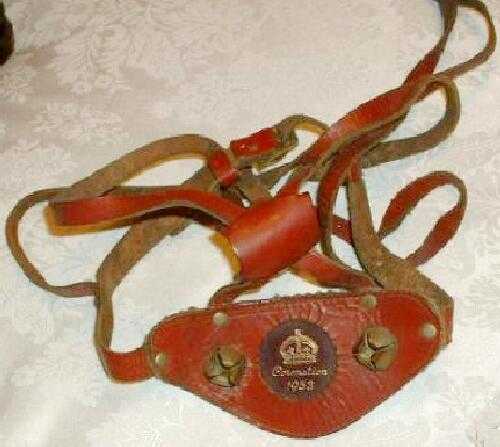
Figure 1.-- We even note a special coomemorative harness sold on the occassion of Queen Elizabeth II's coronation in 1953. It was a red leather haltar with the royal emblem. We know nothing quite like it from any other country. |

|
We note increasing numbers of English children being put into leather harnesses in the late 19th century. We note a number of historic drawings. We do not note any photographs from the late-19th and early-20th century. This does not mean that they were not used, but it is curious that we have not been able to find photographs.
A HBC reader writes, "You may be interested to know that my father, EAH Newman held the U.K. patent for these items. His company, Robert Carr & Co., manufactured them in London from the 1920s until the early 1960s. The harnesses originated from the need to secure children in the then huge Silver Cross style prams. The leading rein was a natural add-on as the child grew. Somewhere I have a photograph of Prince Charles wearing one of his harneses. The business declined as plastic replaced increasingly expensive leather. The Newman family had been in leathergoods manufacture since the early-18th century, and father was not a great fan of plastic!"
We do note photographs of English mothers using saftey harnesses after World War II. It seems to have been much more common than in America or European countries. We are not sure why this was. The English seem especially concerned with security. We even note a special coomemorative harness sold on the occassion of Queen Elizabeth II's coronation in 1953. It was a red leather haltar with the royal emblem. We know nothing quite like it from any other country.
The owner of this vintge garment writes, "It could be useful to mention that in United Kingdom , traditions and conservatism go hand in hand with the royalty. This harness is made with the same design and material that such harnesses were made in 1900. It is like if children have to wear what parents wore and this harness is a good example of this
continuity. It is a part of the British high class which is characterized by the intergenerational uniformity as it is shown by uniforms in private schools. This harness and reins are a good example of the devotion of Royalists to the British Crown. It is certainly a reason why harnesses are worn mostly in this country. They are not
mostly a security device but a kind of symbol of the traditions in the United Kingdom. No surprise when knowing that this harness is related to the Coronation of Queen Elizabeth II. The simple fact that it was made by "appointment of ..." gives to this harness a great prestige and a monetary value. Then, it is like if this harness is an attribute
of the Crown. and children wearing it a part of the royal family."
Modern children's harnesses seem to be much more common in Britain than America. They are still commonly used in England and are available from both Boots and MotherCare.
Newman, Geoffrey. E-mail message (September 25, 2017).
Navigate the Boys' Historical Clothing Web Site:
[Return to the Main country tether page]
[Return to the Main children's harness page]
[About Us]
[Introduction]
[Activities]
[Biographies]
[Chronology]
[Clothing styles]
[Countries]
[Girls]
[Theatricals]
[Topics]
[Bibliographies]
[Contributions]
[FAQs]
[Glossaries]
[Images]
[Links]
[Registration]
[Tools]
[Boys' Clothing Home]
